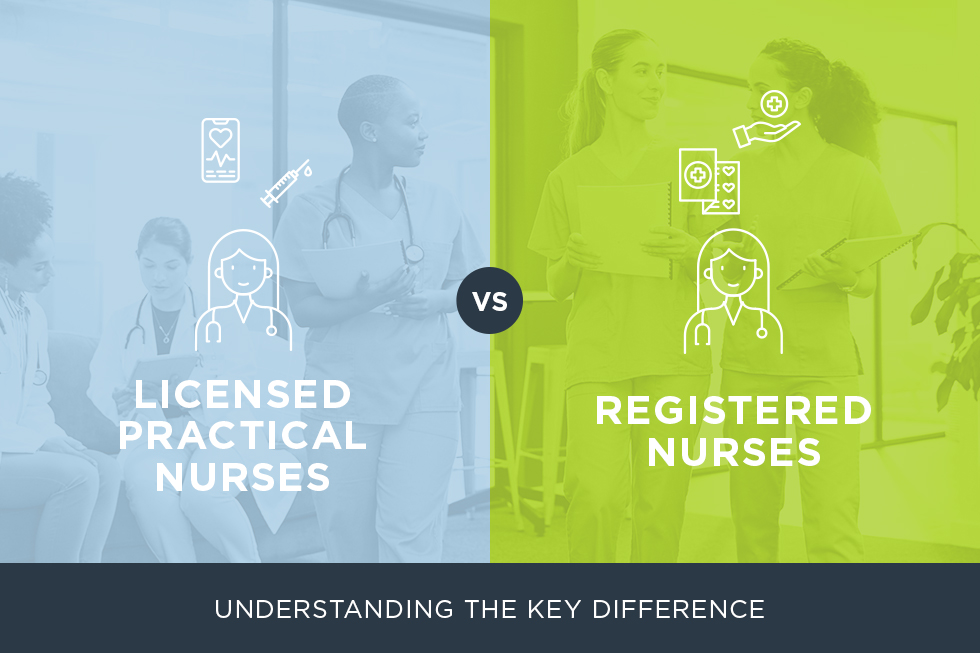If you’re considering a career in nursing, you’ve likely come across the terms LPN and RN. Understanding the key differences and career paths for Licensed Practical Nurses (LPNs) and Registered Nurses (RNs) is essential to choosing the right path for your goals. This guide will break down the distinctions between LPNs and RNs, including their roles, education requirements, and career opportunities.
What is an LPN?
A Licensed Practical Nurse (LPN) provides basic nursing care under the supervision of Registered Nurses and physicians. LPNs often serve as a patient’s primary caregiver in long-term care settings, helping with daily tasks such as bathing, dressing, and medication administration.
Key Responsibilities of an LPN:
– Monitoring patients’ vital signs
– Administering medications
– Assisting with personal hygiene and mobility
– Wound care
– Communicating patient needs to RNs and doctors
Real-Life Scenario for an LPN:
Imagine working in a long-term care facility. As an LPN, you start your day by checking on your assigned patients, taking their vital signs, and helping them get ready for the day. You administer medications as prescribed, assist with feeding those who need help, and provide wound care to patients recovering from surgery. Throughout the day, you monitor changes in patients’ conditions and communicate these to the RNs and doctors on staff. Your hands-on role ensures that patients feel cared for and comfortable.
What is an RN?
A Registered Nurse (RN) takes on more advanced medical responsibilities and plays a critical role in patient care. RNs can work independently or as part of a healthcare team, providing treatment, education, and emotional support to patients and their families.
Key Responsibilities of an RN:
– Conducting patient assessments
– Developing and managing care plans
– Administering medications and treatments
– Performing diagnostic tests
– Educating patients and families about health conditions
Real-Life Scenario for an RN:
Consider a day in the emergency department of a hospital. As an RN, you begin by triaging incoming patients, assessing their conditions, and prioritizing care based on urgency. You might start an IV line for a dehydrated patient, provide wound care for someone injured in an accident, and collaborate with doctors to develop treatment plans. In between, you educate patients and families about follow-up care and monitor their progress closely. Your role is pivotal in ensuring patients receive timely and effective treatment.
Educational Requirements: LPN vs. RN
One of the biggest differences between LPNs and RNs is the level of education required. Let’s explore the educational pathways for each role.
LPN Education:
– Completion of a state-approved practical nursing program (usually 12-18 months)
– Passing the NCLEX-PN exam
RN Education:
– Completion of an Associate Degree in Nursing (ADN) or Bachelor of Science in Nursing (BSN), which takes 2-4 years
– Passing the NCLEX-RN exam
Career Opportunities: LPN vs. RN
Both LPNs and RNs enjoy a wide range of career opportunities, but their scopes of practice and work settings differ significantly.
Career Paths for LPNs:
– Long-term care facilities
– Home healthcare
– Rehabilitation centers
– Physician offices
– Hospitals
– Pharmacies
– Clinics
– Correctional Facilities
– Public School Systems
– Nursing F
– Managed Care
Career Paths for RNs:
– Hospitals (critical care, emergency rooms, surgical units)
– Outpatient clinics
– Public health organizations
– Specialized roles (e.g., pediatric nurse, oncology nurse)
– Management and nurse faculty (education)
While LPNs primarily focus on basic patient care, RNs often take on leadership roles, manage teams, and specialize in specific areas of healthcare.
Daily Tasks of an LPN:
- Helping patients with activities of daily living (e.g., bathing, dressing, feeding)
- Taking and recording vital signs like blood pressure and temperature
- Administering prescribed medications and injections
- Changing wound dressings and monitoring healing progress
- Reporting changes in patient conditions to RNs or doctors
Choosing the Right Path
| Aspect | Practical Nursing (LPN) | Registered Nursing (RN) |
| Education Length | 12-18 months | 2-4 years |
| Scope of Practice | Basic patient care, monitoring, and assistance | Broader responsibilities, including leadership |
When deciding between becoming an LPN or RN, consider the following factors:
– Time Commitment: LPL programs or practical nursing can be completed in about 12 to 18 months, making it possible to enter the healthcare workforce more quickly than through a traditional four-year nursing degree.
– Hands-on training: Practical nursing programs emphasize clinical experience, preparing students for real-world situations. This hands-on approach ensures that graduates are well-equipped to provide patient care, monitor health conditions, and assist in medical procedures.
– Financial Considerations: LPN programs are shorter and more affordable, allowing you to enter the workforce sooner with minimize student debt.
Why Choose MedQuest College?
At MedQuest College, we’re dedicated to helping students in the healthcare field. Our program provides hands-on training, expert instruction, and comprehensive support to prepare you for a nursing career. MedQuest College is here to guide you every step of the way. Contact us to learn more about our nursing program and take the first step toward your future.
The choice between becoming an LPN vs RN ultimately depends on your career goals, timeline, and interests. Both paths offer opportunities to make a difference in patients’ lives. By understanding the key differences and career paths for LPNs and RNs, you can make an informed decision that aligns with your aspirations. Start your journey with MedQuest College and turn your passion for nursing into a new career. Schedule a tour to learn more!

